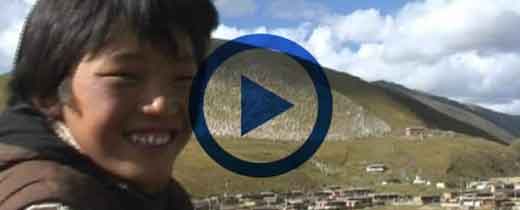Kamba County, also known as “Gampa County“, is a county under Shigatse City; it means “a place near the snow mountain” in Tibetan.
Location
The county seat Kamba Town is located slightly to the south in the middle of this county, and it is at the bottome of a valley surrounded by mountains in the east, north and west with altitude of 4580 meters, aout 307 kilometers east of Shigatse City and 580 kilometers away from Lhasa City.
Kamba County borders Yadong County and Bainang County in east, Sagya County in north, Dinggye County in west, and snow-capped mountains of Sikkim in south.
Best time to travel
From June to September
Local climate
Plateau temperate semi-arid monsoon climate zone
Most popular sites
Kamba Castle is an ancient castle made of adobe bricks. Its majestic body can be viewed from northeast of Kamba County. This place has always been an important frontier defense of Kamba Zong, and being in it is like walking into a medieval European castle. Although the castle has been broken after 600 years of wind, rain and war, the broken walls on the dangerous hillside still stand.
Chorten Nyima Monastery, is located in the Himalayas about 40 kilometers southwest of Kamba County. It has a history of 1,200 years.
Three Pagodas, on the hillside west of Chorten Nyima Monastery, there are three sutra pagodas, namely “Sun Vajra Pagoda”, “Shepherd Pagoda”, and “Female Shepherd Pagoda”, The bottom of all pagodas are full of stones with buddhism scriptures carved. When believeres come, they will reverently circle the three Pagodas three times in a clockwise direction to express their prayers to Buddhas.
Geography and climate
Kamba County is located in the northern foot of the middle section of Himalayas. It is about 75 kilometers from east to west, 93 kilometers from north to south, with a total area of 4,100 square kilometers. Its border line is 97 kilometers long.
It is a high mountain landform of Himalayas, with an average elevation of 4,700 meters. The plateau hills in its territory account for about seven tenths of land area, and natural vegetation is sparse, mostly barren hills; the river valley beach land accounts for about three tenths of land area.
Its terrain is high in north and low in south, with an elevation difference between 170 meters and 200 meters. The highest point is the hills on both sides of Kangsang Tongba at the junction of Sikkim and Kamba, with an elevation of 6763 meters, and the lowest point is 8 kilometers northeast of Linga Village, which is about 4375 meters above sea level
Population and ethnicity
As of 2002, Kamba County has a total population of 9,431 people, with a population density of 2.2 people per square kilometer. Tibetans account for 99.5% of total population; Han people account for 0.16% of total population. There are also a small number of Hui people and Mongolian.
Brief History
During Tubo kingdom, the area of Kamba was under jurisdiction of “Tsang“.
In the middle of 14th Century, Phagmo Drupa Regime implemented “Zong” system, Kamba Zong was established, and it was located in the northeast of current Kamba county
In 1960, Kamba Zong was changed to Kamba District, and it was under jurisdiction of Dinggye County of Shigatse Prefecture
In 1962, Kamba District was changed to Gamba County and was under jurisdiction of Gyangtse Prefecture.
In 1964, Kamba County was abolished, and being merged into Dinggye County, still under jurisdiction of Shigatse Prefecture.
In 1965, Kamba County was restored, and being under jurisdiction of Shigatse Prefecture as well
In 2014, Shigatse Prefecture was abolished and the prefecture-level Shigatse City was established, and Kamba County has been under jurisdiction of Shigatse City since then




